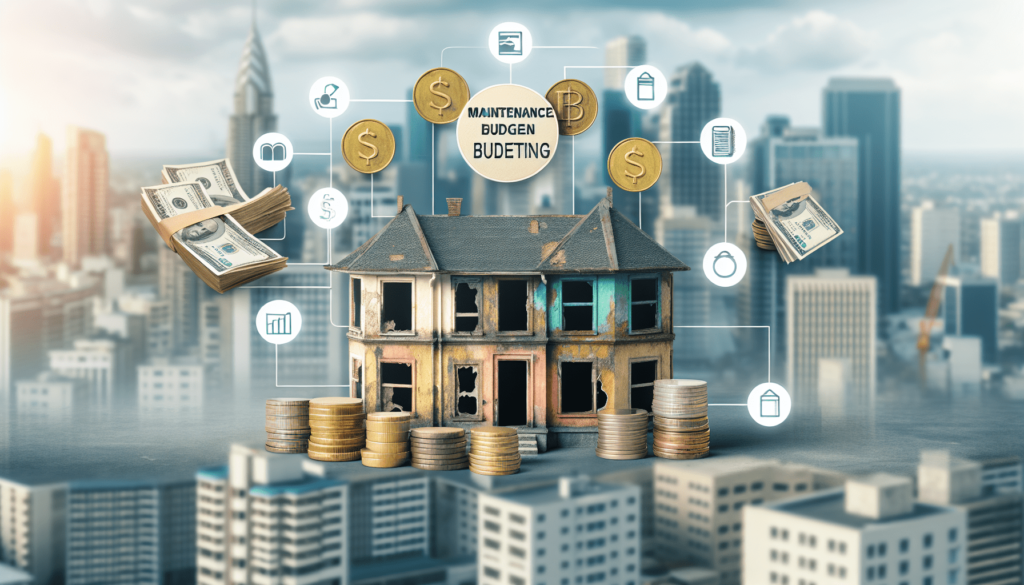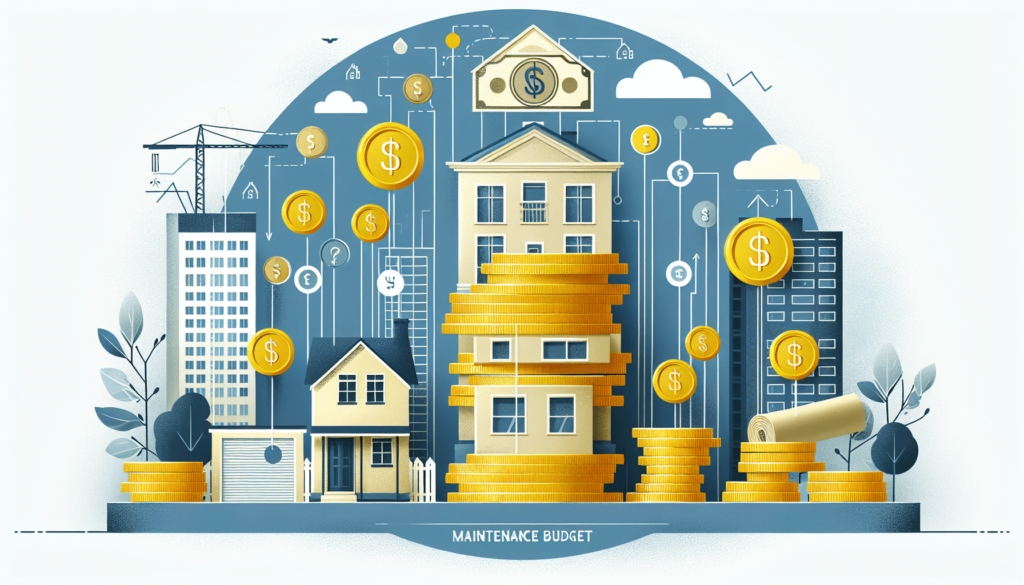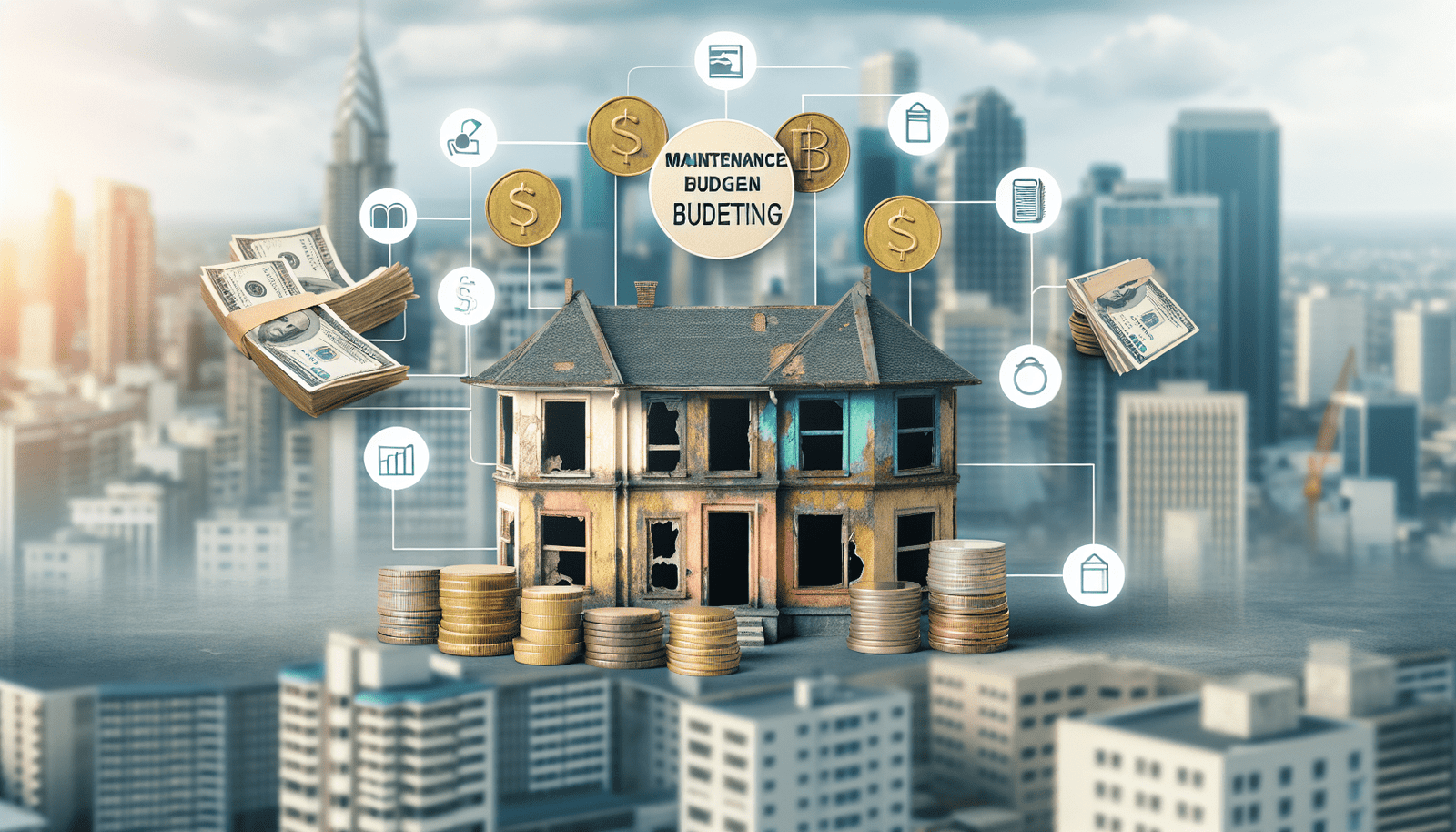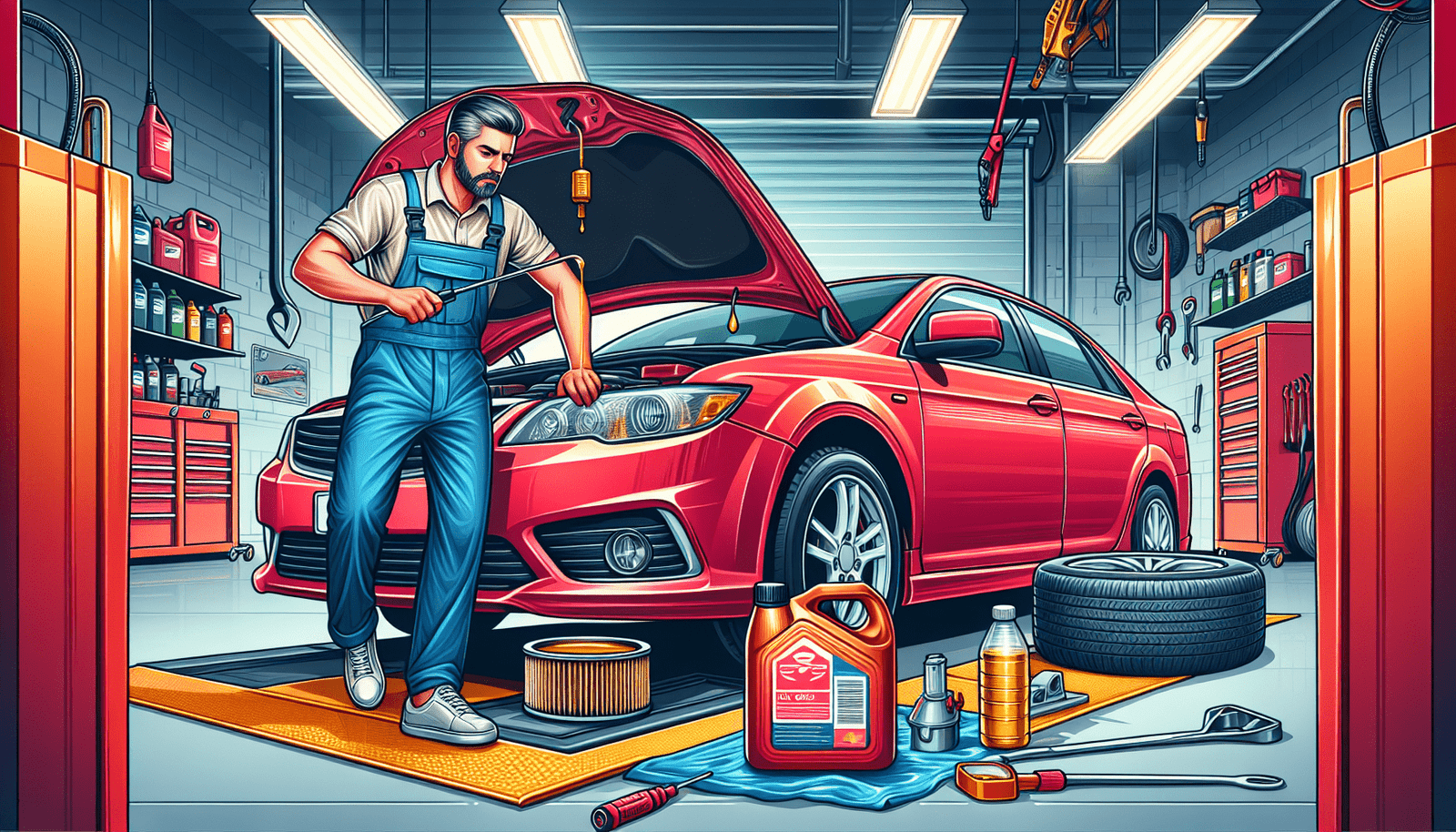So, you may have asked yourself at one point or another, what exactly is the average maintenance budget? Well, let’s just say that it’s a topic that many homeowners and property managers find themselves pondering. After all, knowing how much to set aside for regular repairs and upkeep can be a critical factor in budgeting overall expenses. Whether you’re a first-time homeowner or a seasoned property manager, understanding the average maintenance budget can help you plan and prepare for any unexpected costs that may arise. When it comes to maintaining a property, there are several factors that can affect the budget. Understanding these factors is crucial in order to determine how much should be allocated towards maintenance expenses. Let’s take a closer look at each of these factors and how they impact the maintenance budget.
Size of the Property
The size of the property is one of the primary factors that affects the maintenance budget. It’s logical to assume that a larger property would require more maintenance work, which translates to higher costs. A sprawling estate or a multi-unit apartment complex will naturally have more areas to be cleaned, maintained, and repaired compared to a smaller property. Therefore, the larger the property, the higher the maintenance budget should typically be.
Age and Condition of Property
The age and condition of the property also play a significant role in determining the maintenance budget. Older properties tend to require more frequent repairs and updates compared to newly constructed properties. Wear and tear, along with regular deterioration of materials and systems, are common in older buildings. On the other hand, a property in good condition might require less maintenance and can have a lower budget allocation.
Type of Property
The type of property is another factor to consider when establishing a maintenance budget. Different types of properties have varying maintenance needs and requirements. For example, a residential property will have different maintenance needs compared to a commercial property. Similarly, a condominium complex will have different requirements from a single-family home. The unique characteristics and usage patterns of each property type will determine the maintenance budget.
Location
Location is an important factor as well when it comes to maintenance budgets. Properties located in regions with extreme weather conditions, such as areas prone to hurricanes or heavy snowfall, may require additional maintenance efforts and costs. Climate can impact the wear and tear on the property’s exterior, as well as the functionality of heating, ventilation, and air conditioning (HVAC) systems. Additionally, properties in urban areas might have higher maintenance costs due to the high cost of labor and materials.
Level of Customization
The level of customization in a property can also influence the maintenance budget. Properties with unique designs, intricate features, or specialized systems may require specialized maintenance and repairs. Customized fixtures or finishes might be more expensive to replace or repair compared to standard options. It’s important to consider these factors when establishing a maintenance budget, as customization can lead to increased costs.
Facilities and Amenities
Properties with extensive facilities and amenities will also require a higher maintenance budget. Pools, gyms, clubhouses, and other recreational areas demand regular upkeep to ensure they remain safe and functional. These additional features can significantly impact the overall maintenance budget, so it’s important to allocate funds accordingly.
Overall Design and Construction Quality
The design and construction quality of a property can impact the maintenance budget as well. A well-designed and well-constructed property may require less maintenance in the long run compared to a property with poor design or construction. Higher quality materials and systems can withstand wear and tear better, leading to fewer repairs and replacements. It’s important to consider the long-term implications of design and construction quality when setting a maintenance budget.
Property Management Fees
For properties managed by a professional property management company, property management fees should also be factored into the maintenance budget. These fees cover the cost of services like coordinating repairs and maintenance, conducting inspections, and managing vendor contracts. Property management fees may vary depending on the size and complexity of the property, so it’s essential to include them in the overall maintenance budget.
Insurance Costs
Insurance costs are another expense that should be considered when setting a maintenance budget. Property insurance typically covers repairs or replacements in the event of damage due to unforeseen circumstances like fire, flooding, or natural disasters. The premium paid for insurance coverage must be factored into the maintenance budget to ensure adequate funds are available in case of emergencies.
Utilities and Energy Costs
Utilities and energy costs are ongoing expenses that should be considered when establishing a maintenance budget. These costs include electricity, water, gas, and other utilities necessary to operate the property. Implementing energy-efficient systems and practices can help reduce utility costs and, in turn, lower the overall maintenance budget.
Now that we’ve explored the various factors that can affect the maintenance budget, let’s delve into the different approaches that can be used to determine the average maintenance budget.

Determining the Average Maintenance Budget
When it comes to determining the average maintenance budget for a property, there are several approaches that can be taken. Each approach has its own merits and considerations, so let’s take a closer look at each one.
Annual Budgeting Approach
One common approach to determining the maintenance budget is the annual budgeting approach. This involves estimating the expected maintenance expenses for the upcoming year based on historical data, anticipated repairs, and ongoing maintenance needs. This method allows property owners or managers to plan and allocate funds for maintenance on an annual basis, considering all the factors that can affect the budget.
Percentage of Property Value
Another approach is to allocate a percentage of the property’s value towards the maintenance budget. This method is commonly used for residential properties, where a certain percentage of the property’s value, such as 1-2%, is set aside for maintenance expenses. This approach ensures that the budget scales with the property’s value and can accommodate future maintenance needs as the property appreciates.
Per Square Foot Approach
For properties with a significant variation in size, such as commercial properties or multi-unit complexes, the per square foot approach can be used. This involves allocating a specific dollar amount per square foot towards the maintenance budget. The per square foot rate can be determined based on industry benchmarks or historical expenses. This approach ensures that larger properties contribute a proportionate amount to the maintenance budget.
Industry Benchmarking
Industry benchmarking involves comparing the maintenance budgets of similar properties or buildings within the same industry or market. Property owners or managers can gather data on average maintenance budgets and expenses for properties of a similar size, type, and location. This allows for a more accurate estimation of the maintenance budget based on industry standards and practices.
Now that we’ve explored the different approaches to determine the average maintenance budget, let’s take a closer look at a sample maintenance budget breakdown.
Sample Maintenance Budget Breakdown
When creating a maintenance budget, it’s important to break down the various expenses and allocate funds accordingly. Here’s a sample breakdown of the different categories that may be included in a maintenance budget:
Routine Maintenance and Repairs
Routine maintenance and repairs include regular upkeep and minor repairs that are necessary to keep the property in good condition. This can include tasks such as painting, fixing leaks, replacing light bulbs, and general maintenance of building systems. A portion of the maintenance budget should be allocated towards routine maintenance to ensure that the property remains well-maintained throughout the year.
Capital Expenditures and Upgrades
Capital expenditures and upgrades refer to significant investments in improving or upgrading the property. This can include major repairs, renovations, or replacements of building systems, fixtures, or finishes. Allocating a portion of the maintenance budget towards capital expenditures and upgrades allows for long-term improvements and enhancements to the property.
Reserve Funds
Reserve funds are set aside for future expenses or unforeseen repairs. This acts as a contingency fund to cover any unexpected maintenance needs that may arise. Having reserve funds within the maintenance budget ensures that there is money available to address emergency repairs without disrupting the overall financial stability of the property.
Landscaping and Grounds Maintenance
For properties with outdoor spaces, landscaping and grounds maintenance expenses should be included in the maintenance budget. This can include regular lawn care, tree trimming, irrigation system maintenance, and other landscaping needs. Allocating funds towards landscaping and grounds maintenance ensures that the property’s exterior remains attractive and well-maintained.
Cleaning and Janitorial Services
Cleaning and janitorial services are essential for maintaining cleanliness and hygiene within the property. This can include regular cleaning of common areas, waste removal, and routine janitorial services. Allocating a portion of the maintenance budget towards cleaning and janitorial services helps to ensure a clean and pleasant environment for residents or tenants.
Security and Surveillance Systems
Security and surveillance systems are crucial for maintaining the safety and security of the property and its occupants. This can include the installation, maintenance, and monitoring of security cameras, access control systems, and alarm systems. Allocating funds towards security and surveillance systems helps to protect the property and mitigate potential risks or threats.
HVAC and Mechanical Systems
Maintenance and repairs of HVAC (heating, ventilation, and air conditioning) and mechanical systems should be budgeted for as well. This includes the regular servicing, cleaning, and repair of HVAC units, ductwork, and other mechanical systems. Allocating funds towards HVAC and mechanical systems ensures that these essential components of the property are functioning properly and efficiently.
Electrical Systems
Electrical systems, including wiring, panels, and lighting, should also be included in the maintenance budget. Regular inspections, repairs, and replacements of electrical components are necessary to maintain safety and prevent electrical issues. Allocating funds towards electrical system maintenance ensures that the property complies with electrical codes and regulations and avoids potential hazards.
Plumbing and Sewage Systems
Maintenance and repairs of plumbing and sewage systems are crucial to prevent leaks, blockages, and other plumbing issues. This can include regular inspections, repairs, and replacements of pipes, fixtures, and plumbing components. Allocating funds towards plumbing and sewage system maintenance helps to ensure a reliable and efficient water supply and drainage system.
Common Area Maintenance
For properties with shared or common areas, allocating a portion of the maintenance budget towards common area maintenance is important. This includes upkeep and repairs of shared amenities, corridors, elevators, staircases, parking lots, and other communal spaces. Investing in common area maintenance helps to maintain a welcoming and functional environment for all occupants of the property.
Now that we’ve examined the various components of a maintenance budget breakdown, let’s explore some tips for setting and managing a maintenance budget effectively.

Tips for Setting and Managing a Maintenance Budget
Having a well-planned and managed maintenance budget is essential for the long-term well-being of any property. Here are some tips to help you set and manage a maintenance budget effectively:
Regular Inspections and Assessments
Perform regular inspections and assessments of the property to identify maintenance needs and prioritize repairs and upgrades. By identifying issues early on, you can address them before they escalate and potentially incur higher costs.
Prioritization Based on Safety and Legal Compliance
Prioritize maintenance tasks based on safety concerns and legal compliance requirements. Ensure that essential systems, such as fire safety equipment or handicap accessibility features, are in proper working condition to comply with regulations and maintain a safe environment.
Engage Professionals and Contractors
Engage qualified professionals and contractors for maintenance and repair work. Hiring experienced professionals ensures that the work is done efficiently and correctly, minimizing the chances of recurring issues or subpar repairs.
Compare Quotes and Negotiate
Obtain multiple quotes for maintenance work and negotiate with vendors or contractors to get the best value for your money. Comparing quotes allows you to find the most competitive prices without compromising on the quality of the work.
Tracking and Monitoring Expenses
Keep track of all maintenance expenses and regularly monitor the budget to ensure it aligns with the planned allocations. This allows you to identify any discrepancies or overspending and make adjustments if necessary.
Allocate Contingency Fund
Set aside a contingency fund within the maintenance budget to cover unexpected repairs or emergency situations. Having this cushion ensures that you are prepared for unexpected maintenance needs without straining the overall budget.
Reinvestment for Long-Term Sustainability
Consider reinvesting a portion of the maintenance budget into long-term sustainability initiatives. Energy-efficient upgrades, renewable energy systems, or water conservation measures can help reduce ongoing maintenance costs in the future and contribute to the property’s overall sustainability.
Community Input and Transparency
Involve the community or occupants of the property in the maintenance budget planning process to gather input and ensure transparency. This fosters a sense of ownership and can help prioritize maintenance needs based on community preferences and concerns.
Review and Adjust Budget Annually
Review and adjust the maintenance budget on an annual basis to account for any changes or evolving needs. Market conditions, changes in regulations, or modifications to the property itself may warrant adjustments to the budget allocations.
Consider Outsourcing Maintenance
For properties that do not have in-house maintenance staff or lack the resources to handle all maintenance tasks internally, outsourcing maintenance can be a cost-effective solution. Outsourcing allows you to leverage the expertise and experience of maintenance professionals without the need for a dedicated in-house team.
In conclusion, understanding the factors that affect the maintenance budget and carefully planning and managing that budget is essential for the proper upkeep of any property. By taking into account factors such as the size, age, type, location, and condition of the property, as well as appropriate budgeting approaches, property owners and managers can ensure that adequate funds are allocated for all necessary maintenance expenses. With proper planning, effective management, and the implementation of best practices, properties can be well-maintained and operate smoothly for the benefit of all stakeholders involved.



